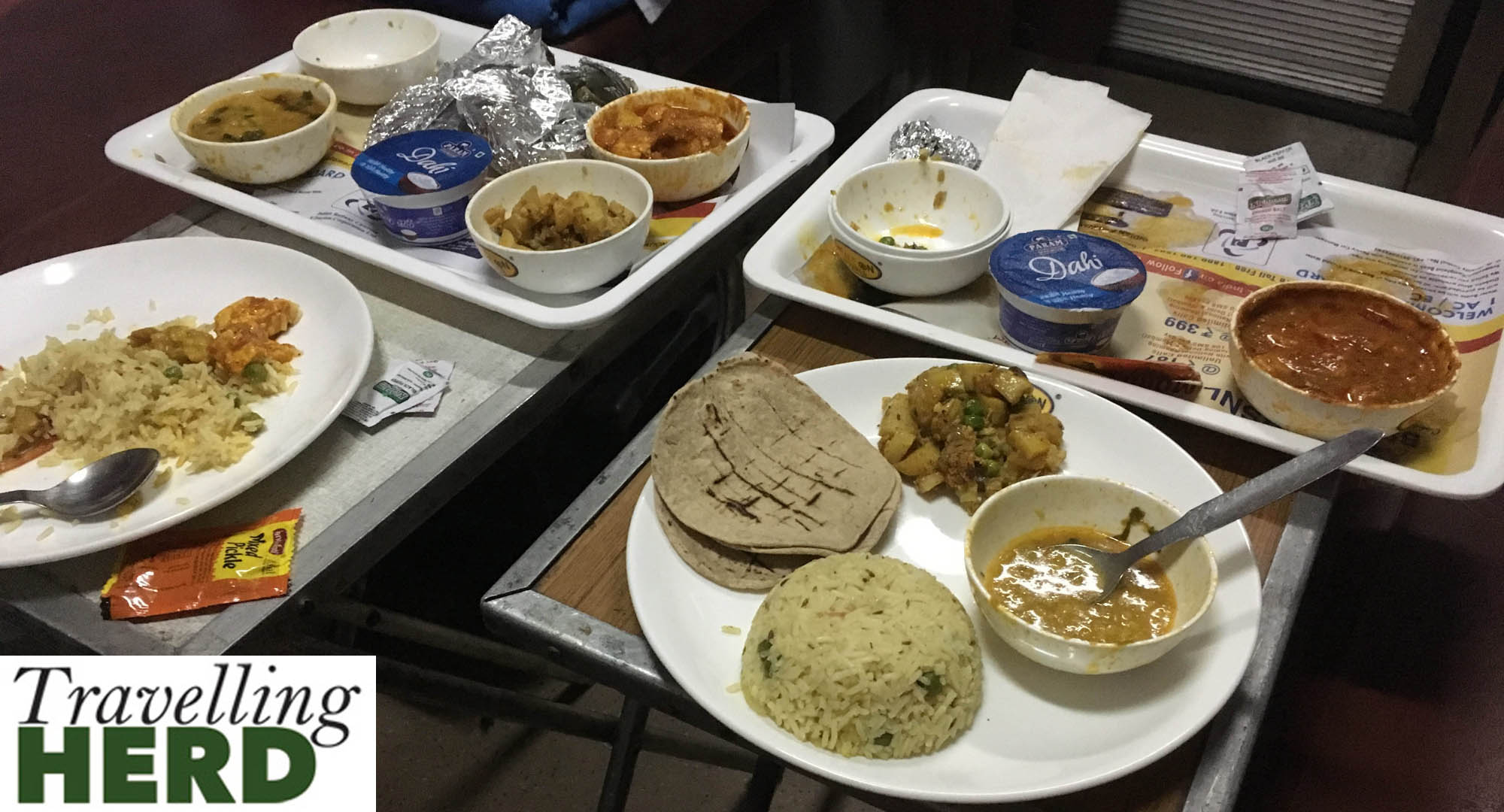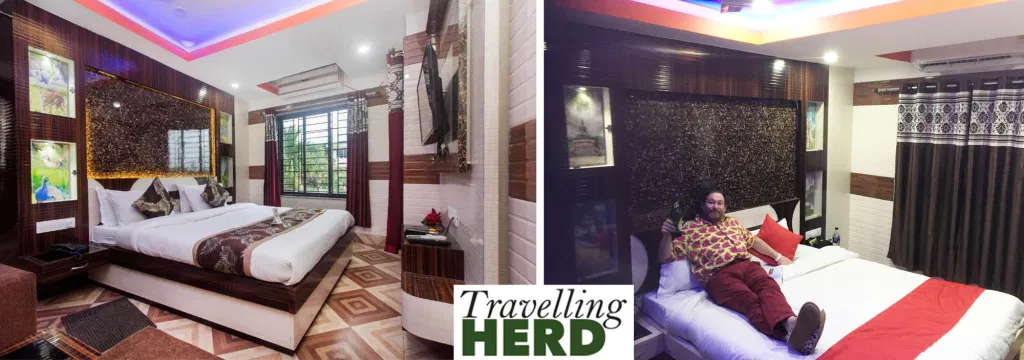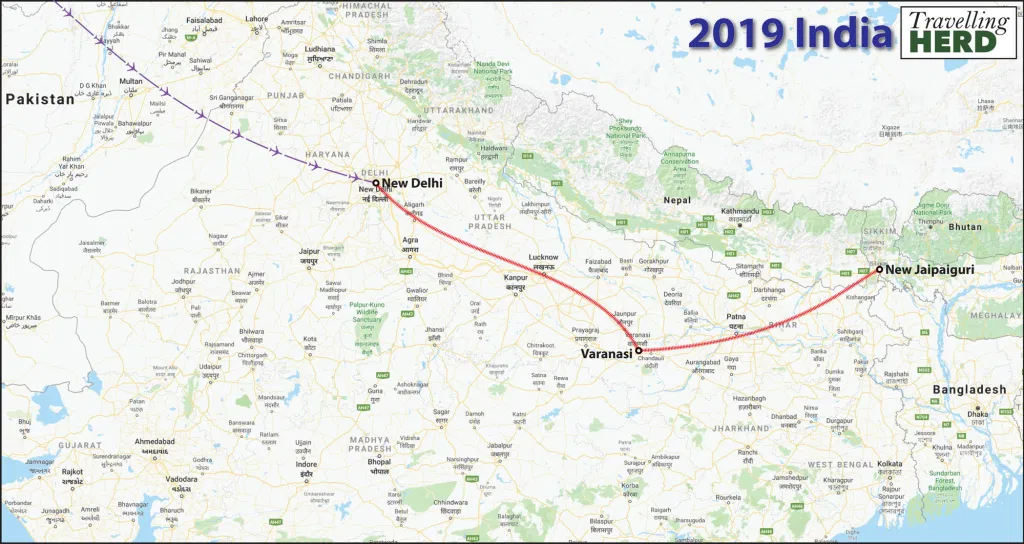Thursday 7th March 2019
Every ticket sold on reserved trains on Indian Railways has a 10 digit PNR number. Day trains tend to have seats so when you buy your ticket you will know your PNR and a specific seat and coach number. For the night trains with sleeping compartments, you do not now your PNR until four to one hours before departure. This is because Indian Railways does not yet know the final mix of passengers. Category AC1 which is the best class of overnight accommodation, and the one we are using, is a mixture of two or four berth compartments. They will never mix male and female passengers. Because we are travelling as a couple we are most likely to be allocated a two berth. We may find, however, that later in the trip, we could be split and Matilda is in a female berth with three other travellers while Robert is in a berth with three other males.
On some platforms there is a big board showing your berth allocations but this is not always the case. The guard always knows where people have been allocated. Most customers use the internet and you can look up your PNR just prior to departure and it will tell you your berth and coach number. On our first day in New Delhi we had no internet and no board so had no idea where we had been allocated and had to go searching for the guard. On this journey we had gone back to the previous night’s hotel to use their wifi just before our journey so were able to get the berth and coach numbers from the internet.
Our second sleeper train of this trip takes us from Varanasi to New Jalpaiguri in preparation for one of the highlights and main purposes of the trip, the DHR [Darjeeling Himalayan Railway] from New Jalpaiguri to Darjeeling.
The train we were catching from Varanasi had already travelled 10.5 hours from New Delhi but was remarkably 30 minutes early arriving at Varanasi. Other passengers left our compartment and we were fortunate to find that we had be allocated a four person berth to ourselves, so we could both sleep on the lower berths.
We were now cognisant of the level of comfort to expect and were pleased to be greeted by a pleasant young attendant wearing a “Meals on Wheels” branded shirt who was obviously expecting us and who welcomed us to our berth; stowed our luggage under the seats for us; provided bottled water; brought us a meal which he set up on tables taken from under the seats and confirmed that breakfast would be served at 08:30.

He returned a little while later with offers of extra portions of dhal and chapati bread and then ice cream. He seemed a little disappointed that we declined it all but the meal was more than enough and neither of us could finish it.
Despite the attentive service, we did not have a particularly restful night’s sleep and were awoken by someone hawking and generally clearing their tubes at about 06:45. There are definitely more pleasant ways to be woken up.
Breakfast was preceded by some much-appreciated morning tea or coffee and a copy of The Times of India. A very typically English start to the day. We were also offered seconds of breakfast which we declined.

We then settled down to watch the Indian countryside go past: cows, goats and water buffalo; crops of maize and paddy fields of rice; villages where boys were playing cricket; women harvesting tea and teams working on the railway track.
As you go further north, near New Jalpaiguri, the fields of tea plants begin to appear.
New Jalpaiguri is not really a tourist destination, other than as the start of the DHR [Darjeeling Himalayan Railway] and Robert found that the choice of hotels here was rather limited. However, we were pleased to be upgraded to the room they use to promote the hotel.

New Jalpaiguri is a very busy station for both passengers and goods traffic. As a railway station it serves as the entry point to Nepal, Sikkim, Bhutan, Bangladesh and the seven northeastern states (Assam, Arunachal Pradesh, Nagaland, Manipur, Mizoram, Tripura and Meghalaya). The railway station is the largest as well as the busiest railway junction of North East Frontier Zone, which serves as the lifeline of the Northeastern states. As such it operates 24 hours a day, creating a lot of noise.

So where is New Jalpaiguri?
New Jalpaiguri is located at the top of a very thin strip of India that splits Nepal from Bangladesh, to the north are the Himalayas, dividing India from China, and to the north east is Butan.

Current Route Map:

Distance travelled so far:
By Air to Delhi: 4,187miles
By 2 trains to NJP: 1,456km (905miles)






One thought on “Night train to New Jalpaiguri”
We are just loving these – keep them going – you havent quite sold the Indian rail system to usbyet but keep trying !!